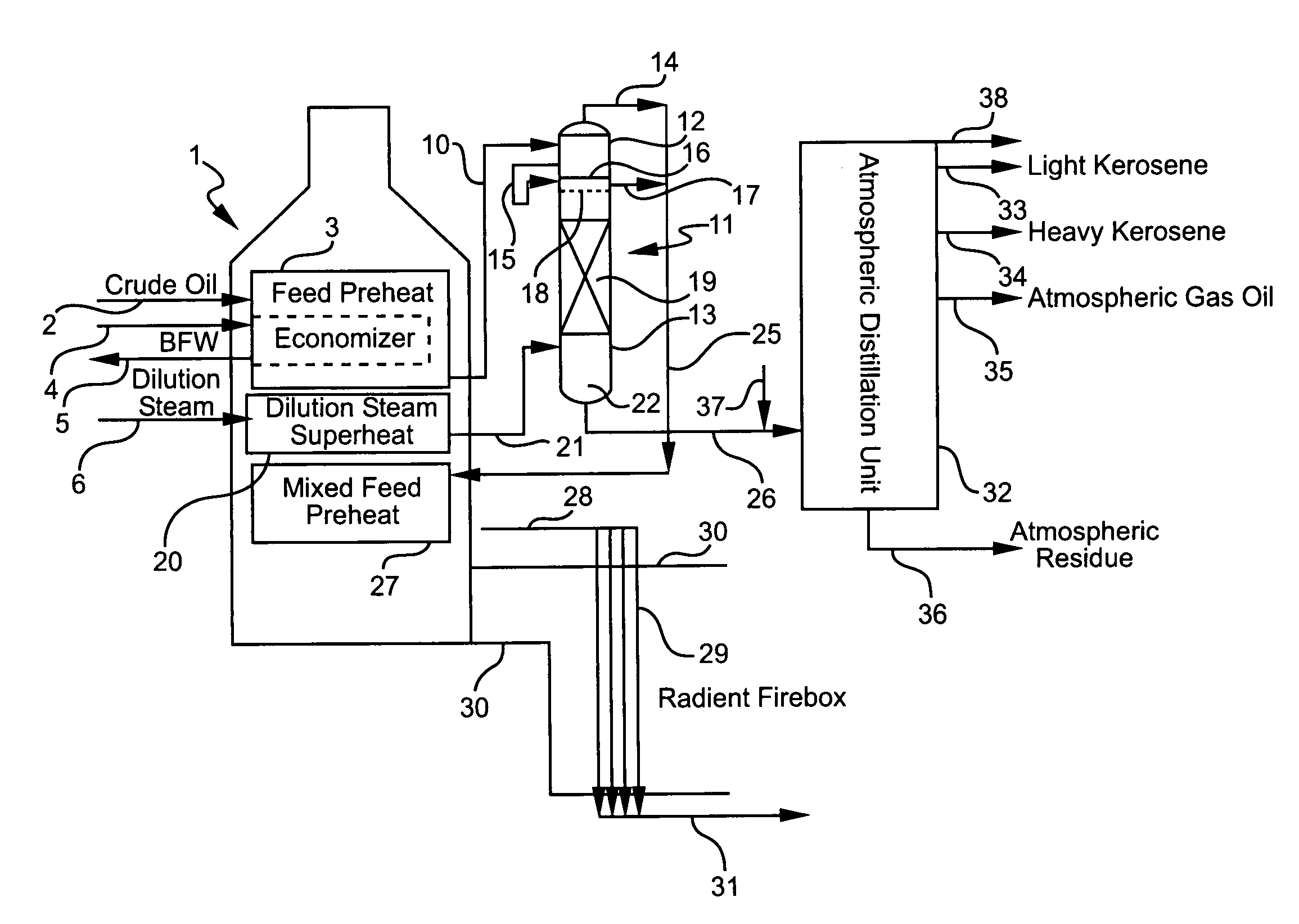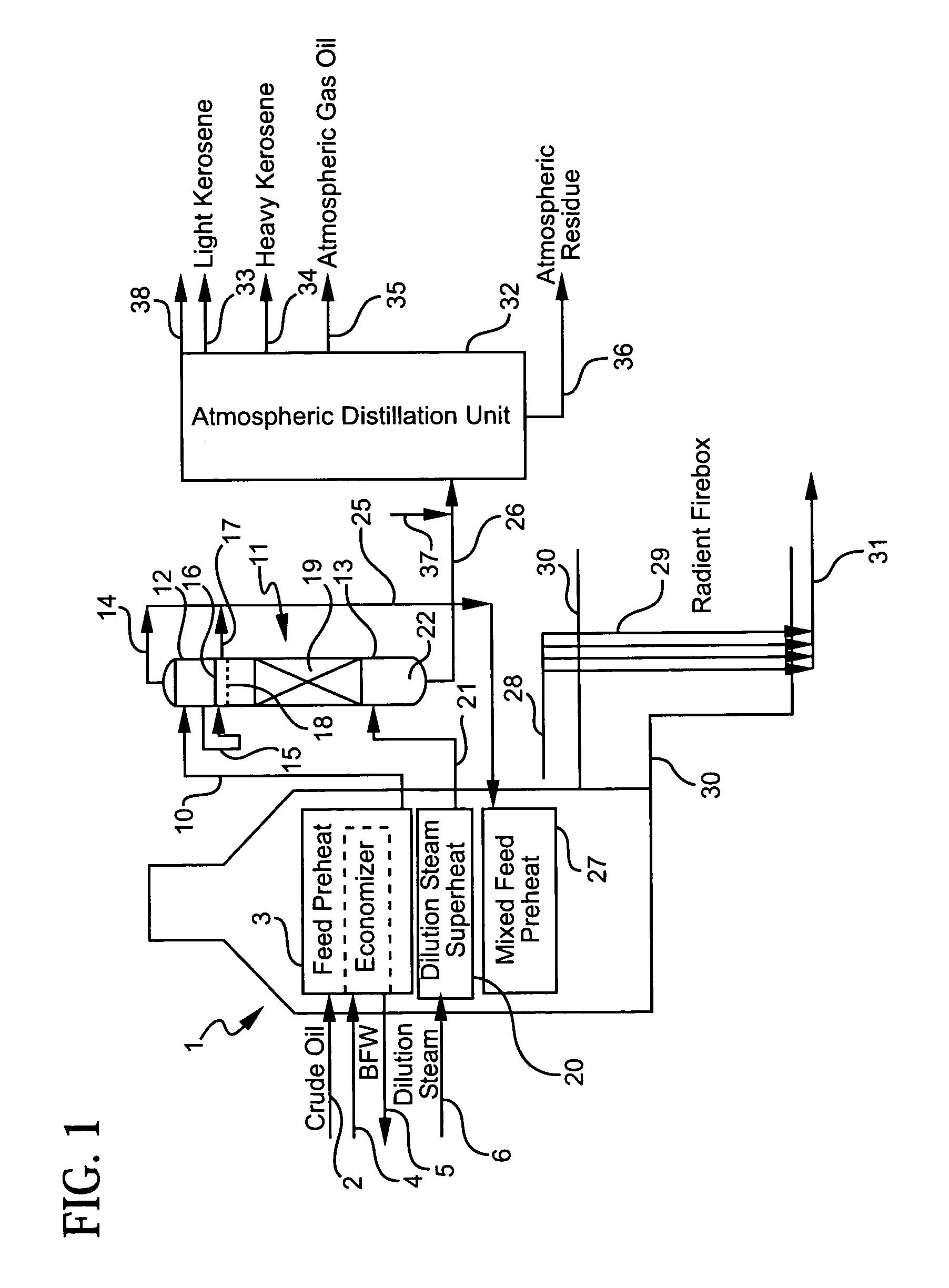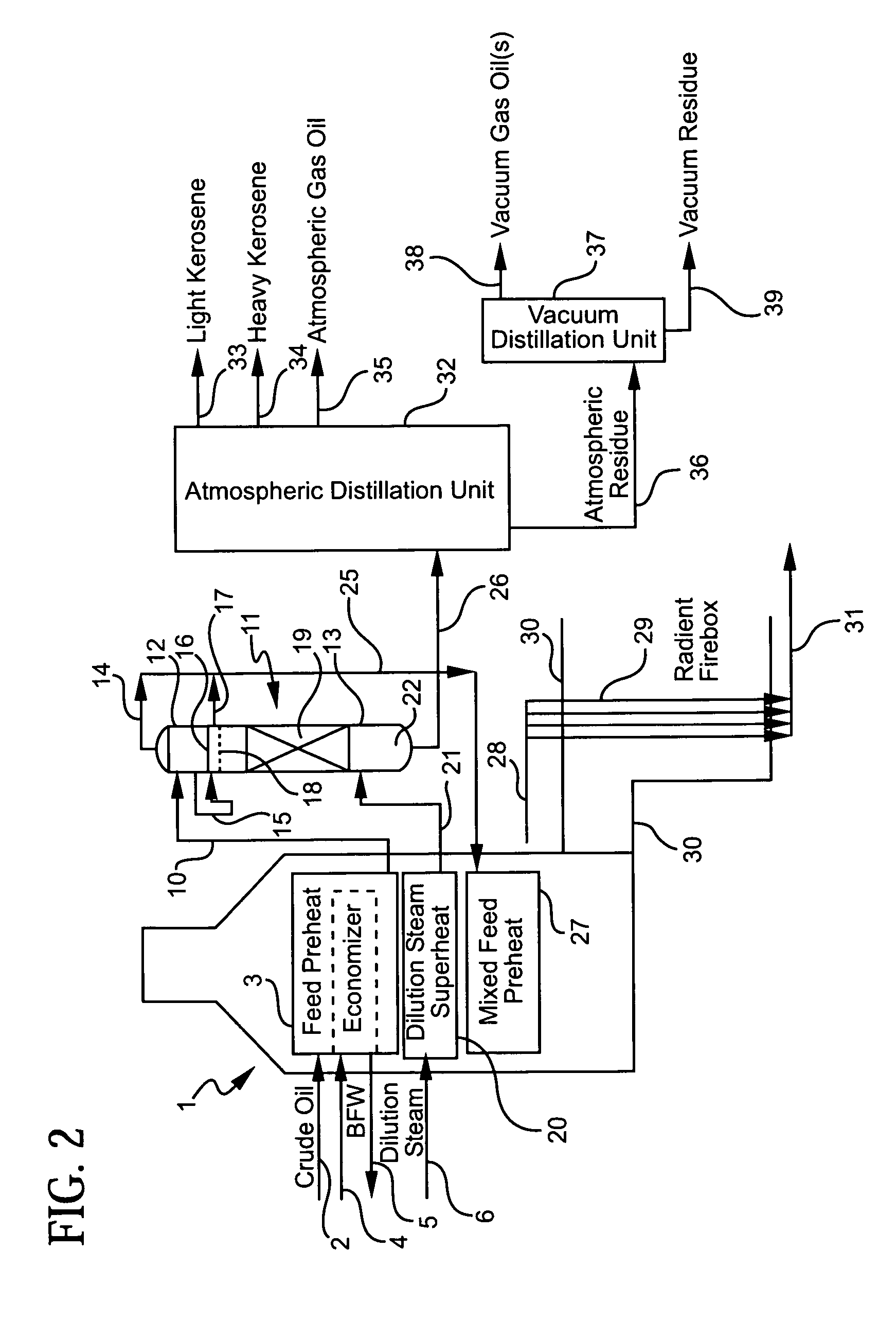Olefin production utilizing whole crude oil/condensate feedstock with enhanced distillate production
a technology of whole crude oil and distillate, which is applied in the field of olefin formation, can solve the problems of inability to increase the amount of distillate recovered from a barrel of crude oil, difficulty if not impossible to provide a boiling range for whole crude oil, and normally has been subjected to substantial processing, etc., and achieves the effect of maximizing the recovery of distilla
- Summary
- Abstract
- Description
- Claims
- Application Information
AI Technical Summary
Benefits of technology
Problems solved by technology
Method used
Image
Examples
example
[0090]A natural gas condensate stream 5 characterized as Oso condensate from Nigeria is removed from a storage tank and fed directly into the convection section of a pyrolysis furnace 1 at ambient conditions of temperature and pressure. In this convection section, this condensate initial feed is preheated to about 350 F at about 60 psig, and then passed into a vaporization unit 11 wherein a mixture of gasoline and naphtha gases at about 350 F and 60 psig are separated from distillate liquids in zone 12 of that unit. The separated gases are removed from zone 12 for transfer to the radiant section of the same furnace for severe cracking in a temperature range of 1,450° F. to 1,550° F. at the outlet of radiant coil 29.
[0091]The hydrocarbon liquid remaining from feed 2, after separation from accompanying hydrocarbon gases aforesaid, is transferred to lower section 13 and allowed to fall downwardly in that section toward the bottom thereof. Preheated steam 21 at about 1,000 F is introduc...
PUM
| Property | Measurement | Unit |
|---|---|---|
| pressures | aaaaa | aaaaa |
| pressure | aaaaa | aaaaa |
| pressure | aaaaa | aaaaa |
Abstract
Description
Claims
Application Information
 Login to View More
Login to View More - R&D
- Intellectual Property
- Life Sciences
- Materials
- Tech Scout
- Unparalleled Data Quality
- Higher Quality Content
- 60% Fewer Hallucinations
Browse by: Latest US Patents, China's latest patents, Technical Efficacy Thesaurus, Application Domain, Technology Topic, Popular Technical Reports.
© 2025 PatSnap. All rights reserved.Legal|Privacy policy|Modern Slavery Act Transparency Statement|Sitemap|About US| Contact US: help@patsnap.com



